Easy SEO Tools for Beginners
Starting as an SEO expert is an exciting prospect. You can drive visibility and increase conversion for your clients with SEO and enable them to grow their brand online. But as a beginner, it may become a little tough or time-consuming to go through all the nuances of SEO manually.
Seasoned marketers and content creators use various online tools that make it easier for them to conduct keyword research that identifies areas of optimization, backlinks, and other on-page and off-page factors. These online tools can help you in various aspects of optimization, but none of them is an all-in-one tool that can perform every element involved in SEO.
Moreover, as a beginner, you’re constantly learning about the field with a limited budget to spend on these tools. So how do you find the exact tool for the job and ensure that you’re not spending unnecessarily on tools that you don’t need?
If you’re unsure about which tool to use, look for the most commonly used ones in the market. The most famous tools in the market are notable because they’re easy to use and deliver precise results.

Best SEO Tools for Beginners
SEO is a dynamic field with multiple elements involved in ranking websites. Google has over 200 ranking factors, which almost makes it impossible to optimize for each and every one of those factors, especially as a beginner.
Online tools help you to identify opportunities and plug gaps in your SEO strategy, saving time and effort on your part while ensuring that your website is optimized for that factor.
The most commonly used beginner tools in SEO are:
-
Google Search Console
Google Search Console is a free-to-use tool provided to everyone with a website. Also known as webmaster tools, the analytical console lets you monitor your website’s presence and growth on Google SERPs.
Google search console provides you with valuable information regarding your site’s ranking and health, which you can use to further increase rankings on Google’s SERP. You don’t need the tool to appear in the SERP, but you can choose what is ranked by search engines on its results page. It’s also straightforward to set up; you just have to verify your website with a code or submit your site for indexing on Google Analytics.
The tool lets you optimize the key factors that play a part in ranking and improving your site’s performance. Google search console is especially recommended if you’re a beginner or have a new website to be ranked.
-
Ahrefs
Ahrefs is a favored tool by SEO specialists, marketers, and content creators. Ahrefs provides a great analysis of the SEO features of your website through its audit features. The tool also lets you know where you can improve your site for higher rankings, along with competitor analysis.
Ahrefs is also helpful to identify your competitors’ linking strategies and have them pointed back at your site. You can fix broken links in your site, identify the pages where most visitors are coming, etc.
The tool has the largest database for links, which helps identify relevant and organic links for your website.
-
SEMrush
Another renowned tool among SEO experts, SEMrush, is an ideal site-auditor, keyword research and competitor analysis tool for beginners. Most professionals favor SEMrush because of its easy-to-use dashboard and convenience in assessing ranking factors and identifying ranking opportunities.
SEMrush allows you to monitor your rankings and improve your website’s performance. You can also compare your website with your competitors for links and info like which page attracts the most traffic. The tool also generates an analytics report that mentions your website’s data, traffic received, domain health, and which keywords yield results and which aren’t.
Perhaps the most significant advantage of SEMrush is that it provides extensive information on keywords for your site. It tells you about related keywords to your niche, top-ranking sites for those keywords, their CTR, and competitiveness. With an arsenal of information on the perfect keywords for your site, you can save lots of time on keyword research and competitor analysis.
The tool is also ideal for content creators, as it gives a clear picture of organic traffic insights. You can view all your articles and blog posts on the dashboard and other information like word count, semantic keywords, and the number of social shares received. SEMrush is also used by businesses to improve site health and increase conversions using data-driven strategies.
-
KW Finder
KW Finder is a pure keyword research tool that helps you to know the long-tail keywords with low competition around your niche. KW Finder is appropriate for beginners but is used by experts alike as it’s one of the best keyword-finding tools in the market with the added capability of analyzing backlinks for your niche.
KW Finder has a rank tracker tool that tells you your organic rankings on SERP and areas where you can improve. You can analyze how your website performs on one metric and then move on to the other with this tool.
But, this tool’s greatest forte is that it shows comprehensive details about a particular keyword, related terms, and their comparisons by volume or cost-per-click. With all the details around the best keywords that you incorporate, you’ll find keywords that are more likely to bring you conversions.
-
PageSpeed Insights
In 2020, Google outlined the importance of user experience as one of its core ranking factors. The idea was to segregate pages with similar content based on the experience it provides its users with.
Page experience is a part of user experience, which determines how quickly your web page loads properly with all the visual elements. A poor page experience would increase your site’s bounce rate, with users ditching you for your competitors.
To know how your web page is performing for this metric, PageSpeed Insights is an ingenuine tool that lets you test your page’s load time and other Core Web Vitals. The tool is also an offering by Google, which gives a score to your web pages based on the core web vitals.
This is surely a must-have tool for any SEO expert regardless of their experience. While the other tools mentioned in this list mostly pertain to keywords and links, PageSpeed Insights lets you know about the design elements that affect your web page performance.
-
Moz Pro
What started in 2004 as a blog and an online forum for SEO experts to chip in their projects and ideas has become a major SEO software today, favored by numerous businesses and SEO analysts. SEO specialists mostly favor Moz because it keeps up-to-date with Google’s algorithm changes which help in ranking websites effectively without missing any key optimization points.
Moz is a full-service SEO software that gives you keyword recommendations, site crawls, insights and suggestions on improving rankings, and much more. The tool’s software is pretty easy to use and very intuitive. One of its popular features includes the toolbar, which informs you of your website’s optimization elements while you’re browsing another site. The tool has a page optimization feature, which provides data-backed solutions to improve the ranking of each and every page of your website.
You can also compare your site’s traffic and keyword performance with your competitors. Knowing which keywords and pages are outperforming yours will give you a solid foundation to work on and enhance your SEO rankings.
Last but not least, true to its origins, Moz still has a chat room where you can get responses to your queries from fellow SEO professionals and discuss projects.
-
Answer the Public
Tools like Answer the Public are immensely popular among bloggers and content creators as it allows you to find topics for blogs, and it’s completely free to use.
Answer The Public is great at finding keyword opportunities for you by recommending related phrases around your niche and covering a topic comprehensively. You also get great opportunities to place your content on Google’s featured snippets in SERPs, which greatly enhances visibility, traffic, and potential conversions.
Keyword research is pretty easy and lightning-quick with the tool; you can download a list of focus and related phrases to use in your blog posts.
-
Majestic
Majestic is a comprehensive marketing tool designed for businesses, marketers, SEO specialists, and content creators. Majestic offers countless features and functionalities that can be leveraged to propel your site to the top of the Google SERP.
With Majestic, you can view the top million websites and the strategy that gets them ranked highly on SERPs. It also has a site explorer feature that gives you an overview of your website’s SEO performance and backlinks. Apart from these, it has keyword research, and competitor analysis features to get you going on your SEO campaign.
-
Wrapping Up
These were some of the most helpful tools in SEO, that help you to identify key areas in your site that would otherwise be too cumbersome and time-taking to find out. But that doesn’t mean that you won’t have to break a sweat in your SEO campaign, you still need to churn out engaging content, incorporate relevant links and do the legwork on the analytical factors provided by the tool.
As a beginner, these tools will help you gain a strong foothold in SEO. Most of these tools also have free trial periods, so you don’t have to worry about budgets immediately for using the tools. Just use the tools to your advantage and work on the suggestion for improved rankings and a successful SEO campaign.
SEO Reporting
Here’s Why Reliable SEO Reporting Is So Essential For Your Success
Everything is turning digital, so why shouldn’t your company? How can you gain potential market share in this digital race? In today’s digital marketing environment, there are various well-established competitors. To engage with them, you must really be visible to potential users who are currently searching for a keyword or product related to your business.
An SEO report will let you evaluate the progress of a campaign as well as the ROI. When starting a search engine optimization- SEO strategy, it’s critical to keep track of your success. You may not have an issue doing this if you are an SEO specialist. However, for site owners who know nothing more than navigating & updating content on their websites, hiring a professional is the ideal option.
Why We Need SEO?
Yes. Did you ever think the internet currently has over 4.6 billion web pages? That’s a lot of contests. The bad news for website owners is that this number is growing by the day, but the good news is that SEO is undoubtedly the most effective way to enhance your site – making it more visible and competitive.
SEO is the technique of optimizing various features on and off your website in order to improve the user and search engine experience. Sites that do not employ SEO may perform poorly and never achieve the desired top spot in search engine results pages (SERPs). SEO actually ensures:
- Your website is crawlable & indexable: Search engines utilize bots to crawl your site. They then record data about the pages they find in their indices.
- A good user experience: Hummingbird, Penguin, Mobile First, and Panda algorithms all attempt to guarantee the best results. This encourages website owners to provide the best possible user experience to their visitors.
- Improved rankings: Let’s face it, this is something that everyone desires. Search engines reward high-quality, high-performing sites, which is why SEO is so valuable. If you optimize your website, it is more likely to rank high on search engine results pages (SERPs).
- Increased traffic: If you can get your site to the top of the search results, you’ll almost surely see an increase in visitors. According to reports, top results often earn a CTR of 30%.
So What Exactly Is SEO Reporting?
SEO reporting is a method of showcasing the results of your search engine optimization efforts. This is the process of improving a company’s website and assets’ exposure on Google. Top keywords, general keywords, new visitors, total visits, and website conversion data are frequently included in reports.

What Is The Purpose Of An SEO Report?
To boost traffic to your page and your popularity. Another reason to get an SEO analysis is to correct any errors that are getting in the way of you and your users. A page’s rank is determined by hundreds of factors. Only a thorough examination of all the elements currently impacting your website can provide you and your web developer with a clear picture of where to enhance and what to eliminate.
The Relevance Of Reliable SEO Reporting
SEO, as we all know, is crucial for the vast majority of organizations. It’s a channel that’s garnering a lot of money and attention. Even as late as 2018, it was projected that the global SEO market was worth $80 billion.
There’s a lot at stake. Businesses rely on the channel as an important marketing platform, and business owners, CFOs, and other key stakeholders want a high return on investment.
As a result, it is vital that you provide regular SEO reports to provide status updates. Having said that, SEO reports are equally important to SEOs and should not be overlooked.
Your task will be considerably easier if you master your SEO reports. With the right report, you may spot patterns (both positive and negative), and areas that need your attention, and receive the information you need to complete your task at a glance.
What Are The Crucial Elements Of An Effective SEO Report?
A typical report will include a summary of your website’s content, who your rivals are in search engine results (typically the top 10 results), the age of the website, server speed, and the number of visitors. It will include their country, the amount of time spent on the site and the number of repeat visitors, social network links, the top-level domain of the website, worldwide link popularity, and elements that might harm your page ranking.
An SEO monthly report, quarterly report, or yearly report will contain particular information that site owners or marketers may expect to see. Here’s what site owners should look for in SEO reporting:
- Reports on Objectives
- Total Work Done During the Period
- Number of Optimized Pages
- Keyword Growth in General
- High-Quality Links Have Been Earned
- Rankings for top terms have risen.
- Growth in Traffic and Keywords for Translated Pages
- Growth of Social Media Communities
- Growth of Social Media Engagements
- Performance Report in Google Search Console
- Mobile Traffic Growth
- Month-Over-Month Growth
- Traffic by Location
- Traffic by Referral Source
- Conversion Rates by Channel
- Click-Through Rate for Top Pages in SERPs
What Are Some Of The Most Effective SEO Reporting Tools?
You’ll need to utilize one or more tools to generate high-quality reports. Varied SEO reporting tools have different features; for example, some focus on backlinks, while others go further into keyword research and performance. A few of the most reliable & helpful tools include Google Search Console, SEMRush, Majestic SEO, Raven Tools, Ahrefs, Moz, etc.
The Great Benefits Of SEO Report
There are three kinds of SEO reports: “Link” reports, “Rank” reports, and “Optimization” reports. The titles of these reports will vary based on the SEO tools and tactics you employ.
The Link Report:- This report will help you with:
- A detailed summary of the current links to your site.
- The value of these links.
- The anchor text used in the link – link to you.
- The page rank of the site the link is generated from.
Various SEO tools may provide additional information, but they should provide the above-mentioned information about the links to your site.
The Rank Report:- This report will help you with:
- The current ranking of your keywords on Yahoo, Google, & Bing.
- The movement in ranking over a set period (day/week).
- The overall visibility of your keywords.
Various SEO tools may provide additional information, but all of them should provide the information mentioned above about your keywords ranking.
The Optimization Report:- This report will help you to:
- Assess the on-page optimization of your website based on your keywords.
- Assess the on-page optimization of your competitors based on your keywords.
- Provide a detailed report on the various optimization factors (title, H1 – H3, keyword density, meta tags) and your score per keyword.
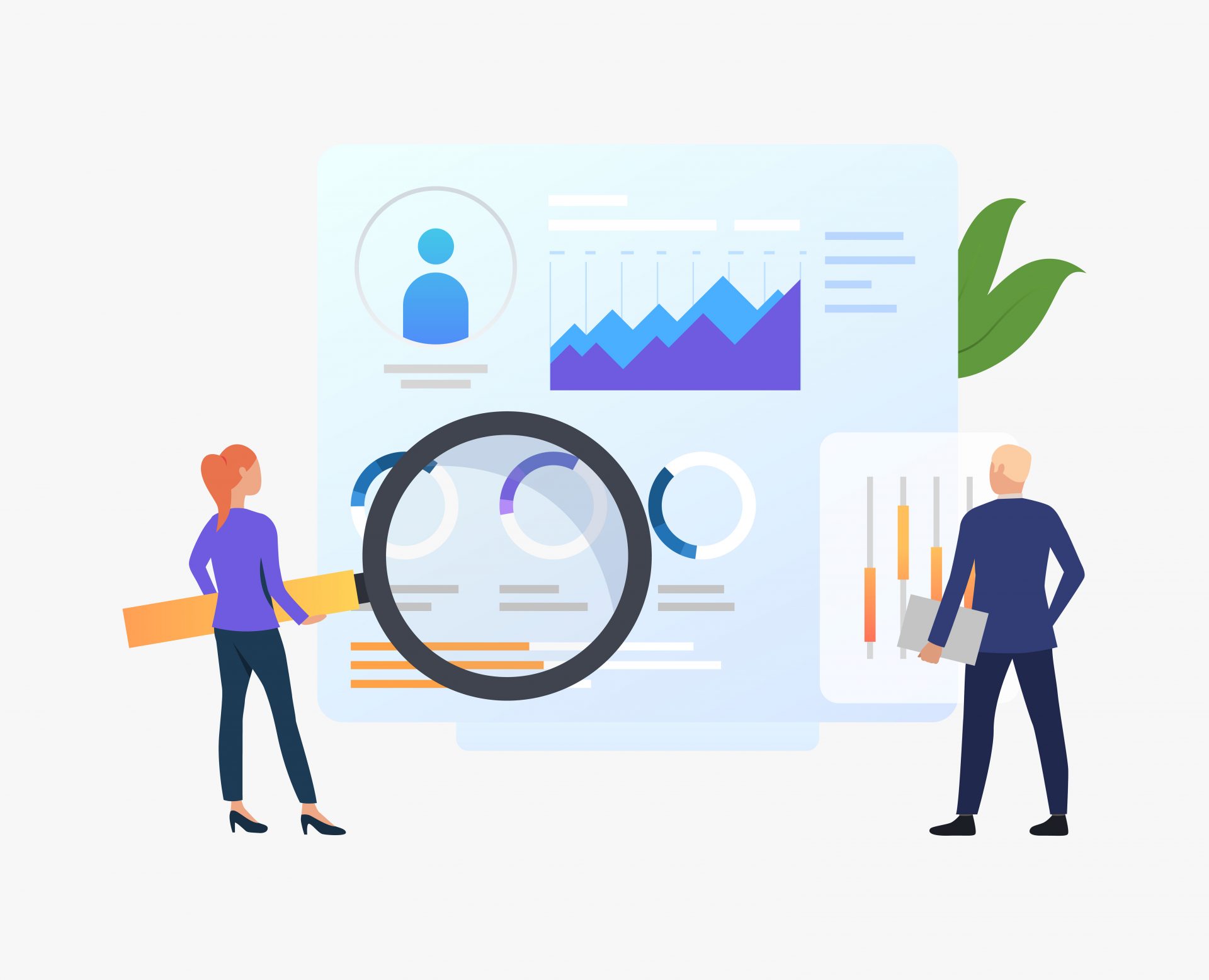
How To Use The Information Provided By These Reports
These reports provide a wealth of information that can be used to improve your SEO performance and strategy. The data may be used to do the following:
- Keep a close eye on your rivals’ optimization levels (if your competitor has an overall optimization percentage of 80 percent & you sit on 60 percent, then your competitor will be ranked higher).
- Keep a precise record of your keyword rankings to guarantee that you achieve and maintain page 1 or 2 ranks.
- Keep a precise record of the links to your website.
- Some sites may delete your link after a certain length of time, and if it is a reciprocal connection, you must remove the link to their site as well.
- Check that the sites that pledged to link to yours do so.
- Keep an accurate record of the value of links to your site in order to assess the performance of your link strategy.
- Optimize your website effectively with the guidelines & information supplied by the “Optimization” report.
There are more applications for the information supplied by these reports, and if used correctly, these reports will become a valuable tool for your SEO success.
A Reliable SEO Report Helps You Attract Targeted Visitors To Your Website
A search engine optimization study will assess your website to see where adjustments may be made to boost your website’s ranking in search engines. More traffic equals a top or better ranking in search engines. An SEO report examines two main areas: on-site and off-site.
On-site SEO evaluates the structure of your website. Many standards are looked for by search engines on a website – HTML, CSS, and JavaScript languages must all be written to tight standards for compliance.
If you do not meet these website criteria, your rivals may acquire an edge over you. You might run a report on your rivals and compare it to the report on your own website to determine your competitors’ strengths and weaknesses.
Off-site SEO measures the popularity of your website. The more relevant websites that connect to yours, the more popular your website will become. The Google PageRank algorithm determines how many relevant websites connect to yours and ranks your website accordingly in search engine results.
An SEO report will compute your PageRank, identify the number of websites that link to yours & assess the significance of the websites that link to yours. Every component of your website, both on and off-site, will be examined in relation to your keywords. After all, it is the keywords that consumers will use to find your website.
SEO reports are necessary for deciding what and how to optimize your website. Utilize this information to prioritize optimization by identifying which areas will have the greatest impact on your site. Remember to utilize an efficient auditing tool to generate reports and track your progress as you go. For expert SEO reports & other digital marketing strategies, Contact our professional at Hawaii SEO Web Design.
Reasons for Doing More Keyword Research
These Are The Reasons Keyword Research Is Going To Be Big In 2022
Whether you want to increase traffic to your website or sell a certain product, knowing how to do Keyword Research is critical to your success. When it comes to locating information on the internet, search engines rely on the terms entered by the user.
Search engines such as Bing, Google, Yahoo, Baidu then scour the web for those phrases, and sites with material that most closely matches the search parameters will display higher in the search results than those with less relevance.
To be effective, you must first grasp what Keyword Research entails. How can you detect whether there is a demand? How can the level of competitiveness be determined? & How can you use all of this knowledge to dominate your field of expertise & interest?
Many internet marketers emphasize the importance of keyword research for any online business. But what exactly is Keyword Research, and why is it so vital for any online business? Here, we’ll go through the essentials of keyword research so that your marketing efforts don’t end up being simply another needle in a haystack.
What Are keywords?
Keywords are the terms that people put into a search engine to find the information they want.

What Is Keyword Research?
Keyword Research is the process of categorizing appealing target keywords for your web pages. These are the search keywords (either single words or phrases) that you want people to use to find your pages when they use a search engine. For example, if your page offers shampoo for dry hair, you should optimize it for keywords related to shampoo for dry hair.
Keywords such as “shower gel,” “shower gel for dry skin,” and “dry skin.” might be used. When a visitor or search engine user types in “shower gel for dry skin,” you want your page to be at the top of the results. The majority of users will not go past the first two pages of results. As a result, your chances of earning top sales or consumers are dependent on reaching the top rank.
History Of Keyword Research?
You may already be aware that without internet traffic, you will not be able to generate any money. Creating content & submitting it to article directories, Squidoo, HubPages, and other sites is one of the greatest ways to bring free traffic to your website.
But first, we must optimize the website, blogs, and so on for certain keywords with low competition so that our content may rank well in search engines. To put it another way – we need to conduct expert Keyword Research.
Why Is Keyword Research Important For SEO?
The critical goal of Keyword Research is to find keywords for each page that address these three crucial aspects.
Low Competition:
Since the industry’s Big Boys are capitalizing on certain keywords, they draw a lot of competition. For starters, you might not want to fight for the top spot with these Big Boys. You can end up failing terribly. Consider low-competition keywords. Determine them and improve your page for them. Low competition keywords will make it easy for you to reach the top of Google.
High Traffic Volume:
Every website’s ultimate objective is to be ranked number one on Google. You may rank first for the term “shower gel for dry damaged skin” just by producing a page that includes this keyword. However, it will not bring you traffic because no one is searching for this phrase. It will be a fruitless endeavor.
You actually need to create a landing page that will get the most benefit in terms of visitors. Look for a keyword in Google that has a lot of traffic and is related to the content of your page. It is essential & vital to know that the keyword your page focuses on should be a keyword many people are searching for.
High Relevance To Your Site:
You may have a lot of visits to your site, but if they are not the appropriate sort of people, your efforts would be futile. If you are selling shampoo and the majority of your visitors are seeking car parts, they will leave and will not be turned into buyers. Visitors seeking shampoo are just what you need.
So, to target the proper sort of people, your keyword research should always identify what each page offers and what keywords visitors often use to search for your page so that they can discover it. Google features a “Trends” function that displays a selection of similar searches as you enter. This may be used to find alternative keywords that consumers may be looking for.
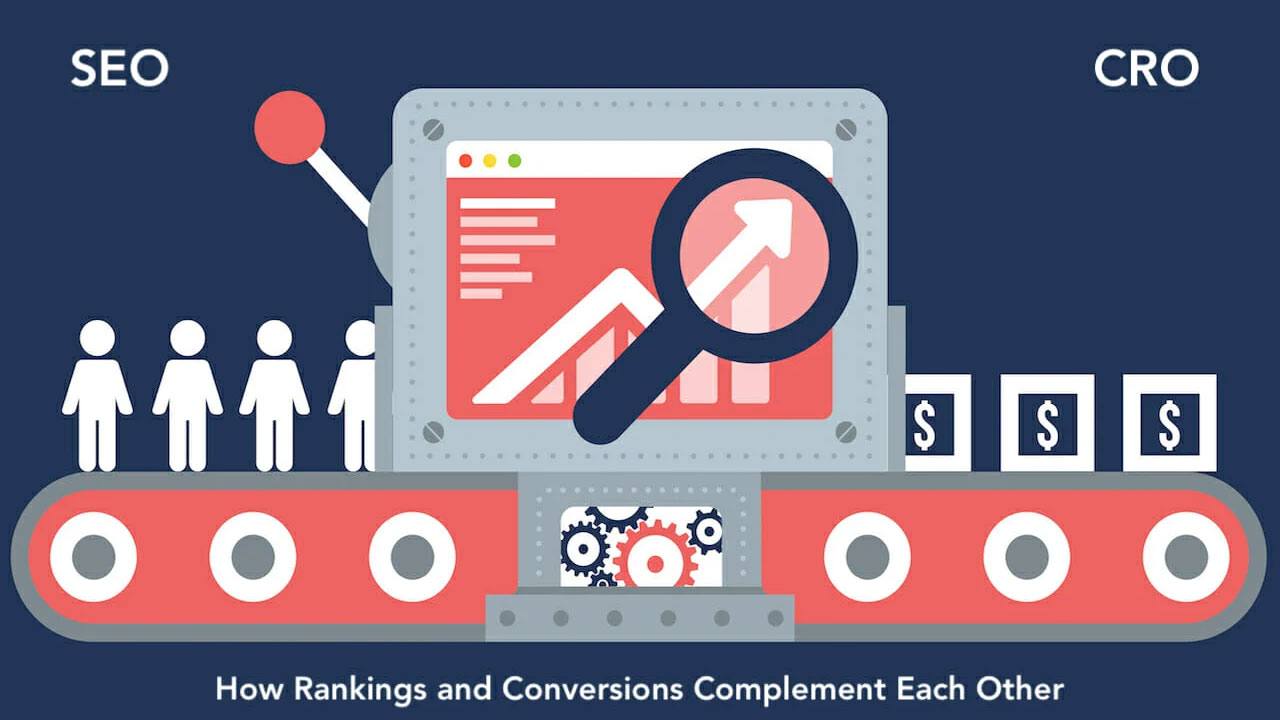
Keyword Research Tools
Google Keyword Tool, This is a fantastic free tool that will highlight alternative keywords, keyword competitiveness, worldwide monthly searches, & local monthly searches. It is strongly advised for your Keyword Research. Other free tools that are fantastic to utilize are Google Trends, ISpionage, & Keyword Country, among others.
How To Utilize Google Trends For Keyword Research?
Google Trends is a free Google tool that gives data and graphs on the popularity of various Google and YouTube searches. Google Trends was initially introduced in 2006. Google Trends’ most current version was issued in May of 2018.
Google Trends may be used for a variety of purposes ranging from technology foresight to SEO improvement. What you intend to gain from Google Trends will determine how you use it. Business owners may learn about the items and services that are in high demand in foreign nations or the United States.
Athletes, artists, and other influencers’ success and popularity may be tracked by social media managers. Advertisers may save time and money by gathering reliable data on what works and what doesn’t across a martech stack or other channels. Here are a few essential factors:
- Find Search Volume Trends
- Find Related Keywords
- Find “Breakout” Keywords
- Uncover Related Topics for Blog and Video Content
- Find Keywords for YouTube Videos
- Uncover Local Search Trends
- Discover Completely New Keyword Ideas
- Tap Into LSI Keywords
What Is LSI Keyword & Why Is It Important For SEO?
As Google’s algorithm is constantly changing, many individuals are living on pins and needles these days. It’s just not apparent how to develop material that will keep you in Google’s good graces. However, even before the Panda controversy, most individuals were aware that Google does not accept keyword stuffing.
Unfortunately, many individuals still believe that repeating a major keyword across the same web page is the greatest approach to having a website ranked and indexed by search engines. This is a big no-no in the eyes of search engines. Nonetheless, one method that Google uses to rank and index websites are the Latent Semantic Indexing – LSI, which detects similar phrases.
Importance Of LSI Keywords:
LSI keywords are related terms that Google searches for when ranking websites. For example, if your primary keyword is “women’s fashions,” search engine spiders will look for other related words to determine what your page is about, ensuring that it is not categorized with other fashion-related pages.
Without this crucial piece of information, search engines have no idea what your website is about. This information is required before the web page in issue is scored, saved in a database, and made available for future search queries.
How To Do Keyword Research For SEO?
During your search engine optimization strategy, you will need to identify which keywords to target on search engines (ideally early on). It is critical to choose which keywords to target because all SEO is built on good keyword placement, linking, architecture, and profit. A thorough SEO study might be the difference between obtaining first-page rankings in one month vs. a year.
Proper Keyword Research may also assist you in determining how much a keyword is worth and how many free visits your site could potentially receive from search engines. Here is a list of statistics to consider when deciding which keywords to target.
Keyword in URL:
Another vital thing to look at is how many of the top ten or so sites contain the keywords in their URL. This is critical for ranking high in search engines. Check to see if the keywords are in the URLs of all the top sites. If they don’t, and your site does, you may have a competitive edge.
Total Number of Expected Visitors:
The most crucial measure to understand is how many times a term is searched in search engines. To be honest, it would be more time-efficient to pursue a phrase that is expected to generate 1,000 visits per day rather than a term that only gets 30 visitors per day. There are several keyword traffic study tools available to assist you in determining how much traffic each keyword may produce for your website.
Total Number of Competing Websites:
The next step is to actually determine how competitive each keyword is. Once you’ve decided on which keywords to target, enter them into the search engine, you’re attempting to rank on and check how many websites appear in the results. Google’s search engine provides information about the competitors.
If you check at the top, you’ll notice a column that informs you how many sites are fighting for every specific keyword/phrase (ex: “1 – 10 of 1,100,000 results for the term “keyword phrase.”) If you do this for each term you are targeting, you will get a good idea of how many sites you will have to compete with.
Allintitle: Keyword Phrase:
While you’re at it, search for the term again, but this time add “allintitle:” at the beginning (ex: allintitle: keyword phrase.) This will only show results that include that keyword phrase in their title tags. Because title tags are the most powerful SEO component, this search provides a more accurate view of the true competition. Furthermore, if a site hasn’t produced adequate title tag data or isn’t targeting certain keywords, chances are it’s not a site to be concerned about.
Sites’ ages:
Another crucial aspect that most search engines consider is the age of the site. If a website has been established for a while and is still going strong, it is a positive indication of a legitimate business and trust. Older sites tend to be hard to outrank.
Size of Competition:
Conduct a site search on all of the top sites that are ranking for your terms. This will give you an actual indication of how large your site has to be in order to compete for that phrase. Search – site:yourcompetition.com to see how many pages your competitors have.
Links to Your Competition:
Conducting a link search on all of your top rivals who are ranking for your chosen phrases will give you a real idea of how strong your competition is. This is a critical aspect since Google and other search engines use the number of sites that link to them to determine how popular a site is. Examining your competition’s Google Pagerank may also offer you a decent notion of how much link strength a site has.
Competitors Listed in DMOZ and Yahoo:
Check to see if the top sites are featured in DMOZ and Yahoo!, as Google relies on these directories to assess relevancy and ranks.
Keyword Trends for the Future:
Is the keyword you’re after a short-term or seasonal term? Or might it be a new and promising product? Using keyword trend analysis tools can help you determine whether a keyword is worth pursuing.
Worth of a Keyword:
Knowing the value of a term may make a significant impact in income, ROI, and effort invested.
Sponsored Search Bidders:
When you search a phrase, you can see how important a term is firsthand based on how many firms are bidding for sponsored ads. Typically, the more websites that bid on a phrase, the more searches or profit that keywords might generate. There are also a number of keyword spy tools available to assist you in determining the average cost per click to rank in sponsored search.
Local Search:
Could you expand your key phrases to include cities or states? Local search phrases are usually simpler to find than large search terms.
Remember that once you’ve determined which keywords will drive the most traffic to the website, you should look into how difficult it is to rank for each of them. All appropriate Keyword Research leads to lucrative opportunities.
Before you invest $1,000s or hundreds of hours optimizing your site & creating links, be sure you’re going in the most efficient route feasible. We recommend that you contact our Hawaii SEO Web Design professionals for a free consultation.
How We Do Online Reputation Management
The Quickest Way To Get Success Is With Right Online Reputation Management Services
In today’s competitive environment, it is critical to promote and protect an organization’s brand image. A great brand image boosts business & profitability. The internet is one of the forms of media in which it has become essential to maintain as well as check the reputation of an organization. A marketer can adopt many techniques for promoting an organization over the internet. There are many types of Online Reputation Management Services used by entrepreneurs to establish their reputation or image.
What Is Online Reputation Management?
Online Reputation Management – ORM is a method of managing the perception of the targeted audience for a business, website, or entity on the web, on social networking sites, social media, & search engine result pages. From a wider perspective, it relates to search engine optimization and utilizes organic SEO techniques. Nonetheless, the primary goal is to promote positive content rather than negative reviews or to press down unfavorable content in the SERP, thereby improving a website’s, brand’s, or corporate entity’s online reputation.
Why Your Business Needs Online Reputation Management
With the online business world becoming more transparent than ever, consumers have the voice to promote a brand or a website or put it down. With social networking, forums, and social media becoming increasingly popular today, consumers can express their reviews about a business or website better and to a larger global audience.
Furthermore, certain corrupt web marketers are taking resort to false-negative remarks to pull down the reputation of another competing website. This has actually become a big issue for websites today because target consumers can see these scam remarks whenever they search for a particular brand on the website. This significantly hampers the brand’s reputation, pulling down its ranking in SERP and often getting the site banned or penalized by major search engines.
The significance of Online Reputation Management Services cannot be overstated. A professional reputation management expert can help you manage your website’s reputation & create deeper relationships with your target audience. These experts use effective internet marketing strategies to boost positive content and combat negative reviews about your organization!
A reputation management specialist monitors and addresses everything that is written about your website or business online. They use a one-of-a-kind online reputation management method that involves promoting positive content. This includes new content, as well as creating social media profiles, responding to negative comments on various internet media, and actively participating in social media via forums, social networking, & blogs.
Online Reputation Management Services
A marketer can easily make use of professional Online Reputation Management Services. These services are provided by reliable and credible companies in the market. Such agencies & providers have a team of experts who have able and excellent skills in managing the image of an organization over the internet. The team of experts works on content creation and management, keyword enhancement, link building, Pay per Click advertisement, online banner promotion, and other such techniques.
The main purpose is to check whether any other competitor is harming the reputation of the brand or company. For this purpose, these professionals create blogs to regulate opinions about your company in its favor. You can even comment on other blogs to check whether the creators of these blogs are not circulating an opinion that might hamper your reputation or hamper the image of your organization.
These professionals also design and post online banners to advertise and sell your products as well as services over the internet. The experts also excel in writing articles or content so that one can easily boost the reputation. The articles draw potential traffic toward the site and boost the popularity of your company. Link building is the technique of effortlessly posting links to the websites of other webmasters who deal with a business similar to yours.
Why Is Online Reputation Management Important?
Brand management is critical for the success of a business. In this age of connectivity, through the growing fame of social networking sites, consumers’ buying decisions are getting greatly influenced by the reviews and comments that buzz around social media sites & forums. This is why the offerings of the service providers are increasing to suit the industry’s needs.
- An organization’s or a brand’s reputation can be attacked, at any time;
- A website, blog, forum, or anything online can be easily tarnished with a hit-and-run poster;
- A single negative campaign can malign and taint the reputation and integrity of a brand or a product in a few seconds that entrepreneurs have built over a long time;
- A negative video on social sites can damage the long-earned credibility of an organization;
- A rumor on Facebook or Twitter can ruin the image of a brand.
Online Reputation Management Services can protect a brand’s image and stature by observing & keeping a pulse on the various user-generated online media outlets &, more significantly, the customer. While managing the reputation of a brand, a service provider stresses search engine security, review management, and customer management by:
- Recognizing the sources of negative comments;
- Defending the integrity of a brand by reducing negative PR and by increasing positive PR;
- Moving up the positive search results to higher positions and taking off the criticisms from the top pages of the search engines;
- Creating user-friendly and reputed content about a brand;
- Maintaining an image with a proactive approach;
- Closely observing the networking sites and other Internet platforms.
In today’s Internet age, where a simple Google search can find detailed information about anyone or everything, Online Reputation Management Services has become an essential practice. Regrettably, not many people can understand what ORM entails or how it affects a brand.
What Does A Reputation Management Company Do?
Online Reputation Management is carried out by implementing a variety of tools and techniques that can prove beneficial for any organization that needs to either maintain or repair its image in the global market. Based on the severity of the circumstance, these services work by handling various areas of reputation management such as:
Handling negative feedback
Negative feedback can occur at any point in time due to a disgruntled client or simply out of someone’s desire to tarnish the image of the targeted individual or company. It can prove to be very lethal in terms of the company’s reputation if not checked well in time. This is where the Online Reputation Management Services pitch in and scout the net for any negative comments.
If left unaddressed, this might blow out of proportion, & it is addressed by ensuring that the complaints and queries by clients are being answered and publicly acknowledged. It builds up one’s reputation by letting the audience know that it is not shying away from negative comments and is willing to resolve the issues, which the world might have.
Pushing negative links further down the searches
Sometimes it is not possible to address some issues as they could be spread by rivals deliberately. In such a case, Online Reputation Management Services can assist in safeguarding one’s reputation by moving such negative links farther down search results and bringing good evaluations and comments about the business to the forefront.
Circulating positive Press Releases
By circulating positive PR about your organization to counter false allegations and complaints, Online Reputation Management helps maintain an irrefutable image of the organization before the targeted audience and customers.
Increase Accessibility
In addition to pushing down the negative remarks about your brand in SERP, the specialist also devises techniques to make you more customer-friendly and accessible. This is with respect to the online interfaces while providing relevant and positive information to web users.
How Much Does Reputation Management Cost?
In today’s cyber age, where you can find detailed information about anything with the help of your chosen search engine, online reputation management is a must for every business. Nonetheless, not many of us are aware of what ORM actually involves and how it influences the business standing. Turning to an expert ORM consultant is advisable because they know best what works and what doesn’t on the internet when it comes to brand management.
The issue of price is important when it comes to availing of Online Reputation Management Services. When selecting a service provider, look for a tiered pricing system that makes the service affordable. The Online Reputation Management Services providers should be willing to work within an affordable budget. However, depending on the complexity of the work, the pricing may vary.
The Consequences Of A Poor Reputation Online
There really is no denying that the internet has changed the way society functions, but while the majority of the influence has been positive, there have been some negative consequences. If, for instance, you set up a business dealing in beauty products and someone starts claiming they are getting health or medical complications from your products.
You can bet the news will spread on social forums such as Facebook, and Twitter among others, in a matter of minutes. As such, your business risks crumbling as you watch in horror despite all the financial investments you have made. While the first reaction might be the legal route, this can take months if not years, and the culprits might never be apprehended.
Through online reputation management, your company can recover from such hiccups in record time. These are experts in search engine optimization (SEO) who employ different tactics to ensure your business or website regains its right place in search engine ranking. Over the last few years, you must have heard or read about companies that have collapsed over superficially leaked information.
Most of these businesses had a large online presence, and as such, they are susceptible to attacks & your business could suffer the same fate. Your business loses credibility and integrity amidst these challenges but also undergoes a tumultuous financial period as investors shy away from pumping money while buyers keep off. This makes Online Reputation Management Services instrumental for every online business.
An Online Reputation Management Agency That Delivers Results
There are numerous key pieces to the online reputation management puzzle that should not be overlooked. If you don’t include all of the essential & vital elements, your campaign will almost certainly fail. Content writing, social media marketing, & search engine optimization are examples of these components. The key, however, is to develop an online reputation management strategy, which may be accomplished with the help of expert services. If you’re getting ready to start building your reputation, an online reputation management company can help in:
- Negative Links Removal;
- Building a Great Website;
- Responding to legit complaints;
- Making a Wikipedia & other Authoritative Entry for Your Brand;
- Writing & Releasing a Whitepaper;
- Creating Relevant Blogs.
Why Choose Hawaii SEO Web Design For Online Reputation Management
Online Reputation Management Services are undoubtedly necessary for any organization that wishes to establish or maintain a positive image in the market. Ensuring effective online reputation management is critical in today’s time, as a single negative comment about your company can damage the reputation that took years to build. Online Reputation Management Services cannot be ignored anymore in a volatile market where your reputation can mean the difference between hitting the jackpot & tasting the dust.
To reap all of the benefits, you must partner with an agency that includes reputation management as part of its SEO services package. With the right Online Reputation Management Services, you can take your business to the next level. Engaging an agency like Hawaii SEO Web Design, offering top Online Reputation Management Services, has now become a necessity.
Google Core Web Vitals
Everything You Wanted To Know About Google Core Web Vitals
Google has stated that it would begin evaluating “Page Experience” in Search ranking, as defined by a set of Core Web Vitals criteria. Most of us are considering or have been asked to confirm that we have met our Core Web Vitals, but how do you know if you have? That subject is more complicated to answer than you would think.
Even though several solutions are now promoting the relevance of a website’s Core Web Vitals, there are many important concepts and difficulties to consider. Many technologies, like GTMETRIX, Google services like PageSpeed Insights & the Core Web Vitals report in Google Search Console, appear to generate independent and sometimes inconclusive results. Why does this happen and how can a webmaster ensure that the adjustments he makes are effective? Here’s a more in-depth look into this conundrum.
What Are Google Core Web Vitals?
Google’s algorithm will change the way it ranks on-page performance. The Core Web Vitals are 3 metrics that evaluate the experience of a user when loading a webpage. These measurements evaluate how quickly page content loads, how quickly a browser loading a webpage can respond to user input, and how consistent the content is while loading in the browser.
These three factors, together with Mobile Friendliness, Safe Browsing, HTTPS, and Intrusive Interstitials, will be combined into a signal Google is calling the “Page Experience Signal.” These are the three Google Core Web Vitals principles:
- Visual Stability of Page Content
- Loading Experience
- Interactivity
Core Web Vitals centers on the user experience after a person clicks on a web page from the Google SERPs, such as whether the page loads quickly or is reliable, i.e., it does not need to load twice before it becomes clickable & navigable. Organizations should analyze their normal engagement measures, such as bounce rate, time on site, pages per session, & so on, with a greater emphasis on these elements.
These indicators, available through your Google Analytics account, show whether or not a visitor appreciates their session on your website after accessing it via organic search results. Core Web Vitals are a set of fundamental components that Google considers crucial to the overall user experience of a webpage.
Core Web Vitals have three distinct measurements that relate to page loading speed and user interaction: First Input Delay (FID), Cumulative Layout Shift(CLS), and Largest Contentful Paint (LCP). In essence, Core Web Vitals are a subset of attributes that will be included in Google’s “page experience” score (essentially, Google’s method to assess the entire UX of your website).
Why Are Core Web Vitals Important?
Google intends to use page experience as a ranking component in its search engine. Based on the declaration and the context, it’s reasonable to assume that Core Web Vitals will account for the great majority of your page experience score. It’s crucial to understand that a high page experience score will not automatically propel you to the top of Google’s search results.
Furthermore, Google was keen to remind that page experience is one of the many (about 200) factors used in ranking websites in search results. The page experience will be a collection of characteristics deemed significant by Google for user experience, such as:
- Mobile-friendliness;
- HTTPS Security;
- “Safe-browsing”;
- Lack of interstitial pop-ups, etc.
Largest Contentful Paint (LCP)
The time it would take for a page to load from the standpoint of an actual user is referred to as LCP. In other words, it is the time required to view the majority of the content on the screen after clicking a link. LCP is not the same as other page speed analyses. Several other page speed and loading performance indicators such as First Contextual Paint and TTFB may not always accurately describe how users engage with a web page.
When considering page loading speed, LCP focuses on what matters most: the ability to see and engage with your website. Google’s PageSpeed Insights can be used to assess your LCP score. That’s helpful, particularly when it comes to identifying areas for improvement. The benefit of using Pagespeed Insights instead of a website like webpagetest.org is that you can examine how your page performs compared to established Chrome browser data.
First Input Delay (FID)
Google’s second type of Core Web Vital is the First Input Delay metric. Your URL has an FCP score at this level. But at this point you need to determine whether or not users will be able to interact with your page at this moment. That is what FID measures: the length of time it takes a user to engage with your website. FID is used by Google to measure how real-world customers interact with web pages. Indeed, FID basically measures how long it takes for events on a page to occur.
It’s a page speed score in that sense. Nevertheless, it goes a step further and evaluates how long it takes people to accomplish a task on your website. FID is generally not a big issue for a page that is entirely content (such as a blog). The only actual “interaction” is scrolling the page – pinching to zoom in and out is also an option. Other interactions are as follows:
- Clicking on the site’s navigation link;
- Choosing an option from a menu;
- Entering email or data into a field;
- Opening up “accordion text” on mobile devices;
Cumulative Layout Shift (CLS)
The Cumulative Layout Shift – CLS of a page indicates how stable it is during loading (aka “visual stability”). In another sense, if the contents on your website shift while the page loads, you have an elevated CLS. That’s not a good sign. Rather, you prefer your website elements to load with some stability. Users wouldn’t have to re-learn where links, images, or forms are placed after the page has completely loaded, and you will not unknowingly click on something.
Which Users Are Included in the Chrome User Experience Report?
Although the field data is drawn on the most recent 28 days of info from Chrome User Experience Report (CrUX), and it’s just the 75th percentile of that information, the Web Vitals are sluggish to update. Using 28 days of data as well as the 75th percentiles of information is beneficial since it reduces variations and extremes to provide a more accurate assessment of your site’s performance without creating a lot of junk that is difficult to interpret.
Since performance indicators are particularly vulnerable to network & device congestion, you must smooth out this impact in order to get to the true narrative of how your site performs for the substantial proportion of visitors. Nonetheless, they are agonizingly slow to update, resulting in a really slow feedback loop from problem resolution until you see the effects of that change reflected there.
The 75th percentile – p75, in specific, is significant, as is the delay it causes. It analyzes which of the Core Web Vitals contributes to 75 percent of your visitors’ page visits over a 28-day period. As a consequence, it has the strongest Core Web Vital score of 75% of your website visitors. As a result, it is not the average of this 75% of page visits, but rather the lowest value of that set of numbers.
How Do You Enhance Your Core Web Vitals in WordPress?
Each statistic necessitates its own set of strategies. The bulk of improvements come from adopting WordPress efficiency best practices, with a few areas of focus – which is why selecting the best WordPress caching plugin will aid you with no effort on your side.
Improving Largest Contentful Paint(LCP) on WordPress
Largest Contentful Paint is the most evident statistic to optimize for, as it is based solely on WordPress performance best practices:
- Optimize browser caching.
- Set up page caching.
- Optimize your images.
- Use server-level compression.
- Optimize your code.
- Use preconnect for important resources.
- Use a content delivery network – CDN for global audiences.
Improving Cumulative Layout Shift(CLS) on WordPress
Cumulative Layout Shift Optimization is a little more complicated because it interacts with your website’s code. The following are among the most prevalent problems and solutions:
- Optimize web fonts (FOIT/FOUT)
- Fix images without dimensions
- Fix ads, embeds, and iframes without dimensions
- Be careful with injected content.
Improving First Input Delay(FID) on WordPress
First Input Delay is perhaps the most difficult to optimize since it is totally code-based. You’ll want to keep heavy JavaScript activity to a minimum so that the browser can react to user inputs as soon as possible. Begin by removing any unnecessary JavaScript if at all possible. You could address PageSpeed recommendations such as “Reduce javascript execution time,” “Remove unused JavaScript,” & “Minimize main thread work” by doing so. Improving FID, in general, maybe tough if you are not a developer.
How to View Google Core Web Vitals for a Full Website?
Presenting a URL to PageSpeed Insights is the simplest method to obtain a quick peek at the Core Web Vitals for a specific URL as well as the entire origin. Acquire access to Google Search Console to understand how Google views the Core Web Vitals of your whole website.
This is a free Google service that describes how Google sees your entire website, particularly the Core Web Vitals. Google Search Console has always been utilized by SEO teams. The metrics that web developers will need to manage, on the other hand, are Core Web Vitals. Web development teams, if they haven’t already, should have a thorough grasp of this concept.
To acquire access, you must first register a Google account and then verify ownership of the site by a variety of techniques by placing a file in your web server or adding a TXT line into the DNS record. The Google Search Console will then provide a report that provides an overview of how the website has been compliant with the metrics of the Core Web Vitals over the last 90 days.
How to Fix Slow Server Response Time
SRT or Server response time is the duration of time that expires between a client requesting a (web)page in a browser & a server responding to that query. It is quantified by TTFB (Time to First Byte). The time it requires to get the first byte of a page after executing an HTTP query is measured in milliseconds. Here are seven simple techniques to improve your website’s server response time:
- Keep WordPress Lightweight
- Use a CDN
- Optimize Databases
- Use Reliable and Fast Web Hosting
- Monitor PHP Usage
- Configure Caching
- Minify Scripts
Improving Core Web Vitals Is Crucial To Success!
Don’t be shocked if you struggle to improve your organic rankings if you aren’t ready and haven’t worked on optimizing your web pages. Understand that your website does not have to be the greatest or quickest on the internet; instead, you should seek to outperform your competition.
Start working on improving your website’s Core Web Vitals immediately if you haven’t already. Those that do nothing to improve the user experience will most likely witness a fall in positions, a change in rank allocation, and a drop in engagement metrics like greater bounce rate, less time on site, fewer pages per session, and so on. Contact Hawaii SEO Web Design for more information.
Conversion Rate Optimization
Conversion Rate Optimization Secrets Exposed! Here Are The Key Facts
The key to business success is converting prospects into customers. Prospects that visit your website or business must be converted into consumers. Some marketing approaches are more conducive to this change than others. For marketers, identifying which channel generates prospects who become customers is vital & essential. Once identified, the marketing channel most effective in bringing in easily convertible prospects, you can use it to improve the success of your other marketing ways.
Conversion Rate Optimization is important to business success. Understanding how each particular marketing channel impacts the conversion rate allows you to map your income flow and devise ways to improve it. Each form of marketing you use to attract customers usually has some level of success.
Identifying exactly how much success that marketing channel has and how it impacts your business is relatively simple. One needs to look at the number of responses a particular marketing campaign generates and look at the number of conversions those responses generated, and you’ll have a clear picture of how well a particular marketing channel is working.
What Is Conversion Rate Optimization?
Conversion Rate Optimization is for people who want to turn the traffic that their website already gets into leads and sales. This is achieved by considering various elements on the page – text, images, offers, etc., and considering which combination of those elements results in the most conversions. By testing hundreds of combinations, you’re data mining for the optimum converting page.
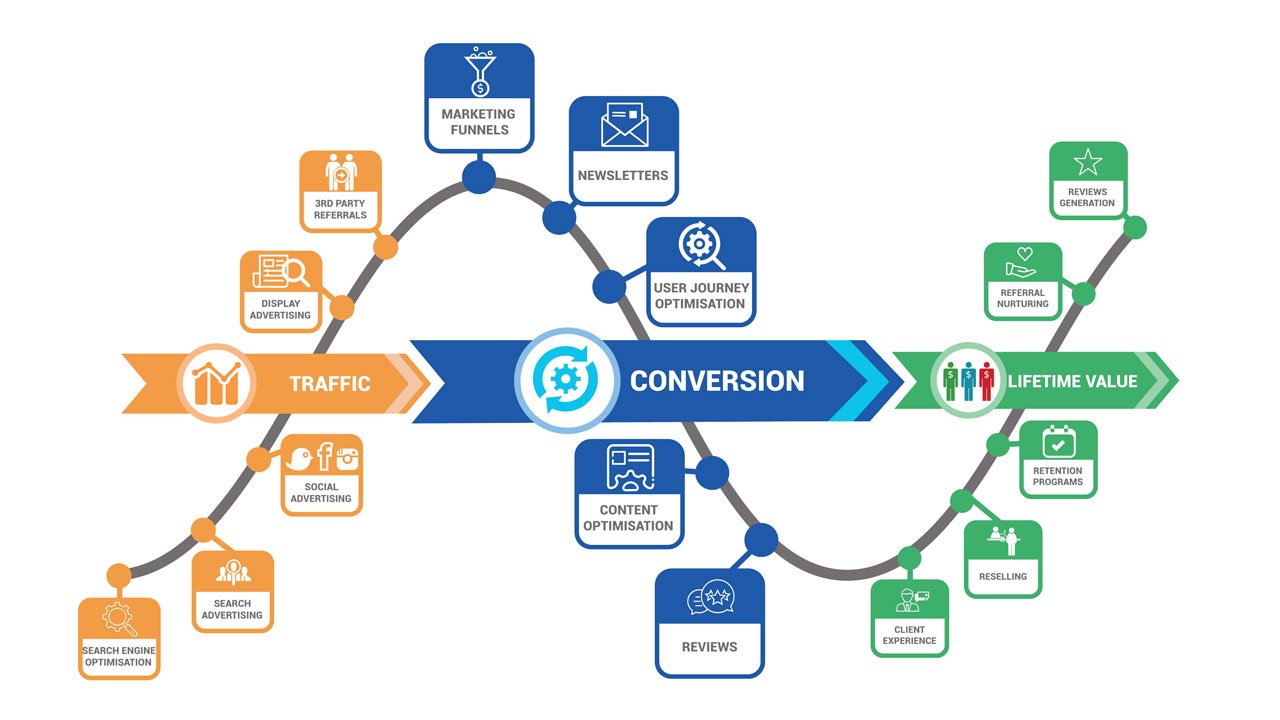
Every page has some text, graphical elements, and perhaps offers that contribute towards a conversion (i.e., your visitor turns into a lead or a customer). To find out which elements are working, you need to do a lot of testing. You need to test the combination of elements that gets the best conversion. Ideally, you’ll have a decent amount of traffic already so that it’s possible to test hundreds of combinations and get a decent level of data from which to draw conclusions.
Understanding Conversion Rate
Conversion rate is a method for testing, tracking, and improving your marketing activities. A website’s conversion rate refers to the percentage of visitors who engage in a specific, desired action based on the page’s content. Typically, this entails purchasing a product or service, or it can also be as straightforward as clicking a certain link. As an example, it refers to the number of visitors who land on a product’s web page and subsequently make a purchase.
This is a conversion from being interested in the product or service into an actual purchase or sale, converting a casual visitor to an actual customer. When a web page is designed primarily to grab a visitor’s attention and redirect them to another page, the visitors who click the link and land on the second page represent its conversion rate. However, not every web page has a measurable conversion; only those that encourage visitors to complete a specific action do. By tracking your conversion rates, you can gain valuable insight into how effectively your website is fulfilling its purpose.
What Are The Benefits Of CRO In SEO?
Conversion is an important aspect of any paid search campaign. Conversion Rate Optimization empowers you to get the most out of every dollar spent on marketing by identifying the sweet spot that will persuade the greatest number of prospects to take the appropriate action. Conversion Rate Optimization aids in increasing your ROI.

What Is The Difference Between Growth-Driven Design & Conversion Rate Optimization (CRO)
Conversion rate optimization is only one element of a larger issue. The Growth-Driven Design technique is the larger riddle. Growth-Driven Design focuses on determining what to construct, whereas conversion rate optimization focuses on determining the effectiveness of what you build. Conversion rate optimization is the step-by-step method of placing Growth-Driven Design into action. Conversion rate optimization focuses solely on optimizing current website pages, whereas Growth-Driven Design focuses solely on adding new pages to the website.
Benefits Of Conversion Rate Optimization – Why Is It Important?
The majority of online marketers out there are too busy acquiring more traffic and spending a fortune in the process, which is probably why most of them fail miserably. When a business gets a decent quantity of traffic, you should focus on raising the conversion rate. Ultimately, what truly counts at the end of the day is the volume of business generated, not just the visitor count on your website.
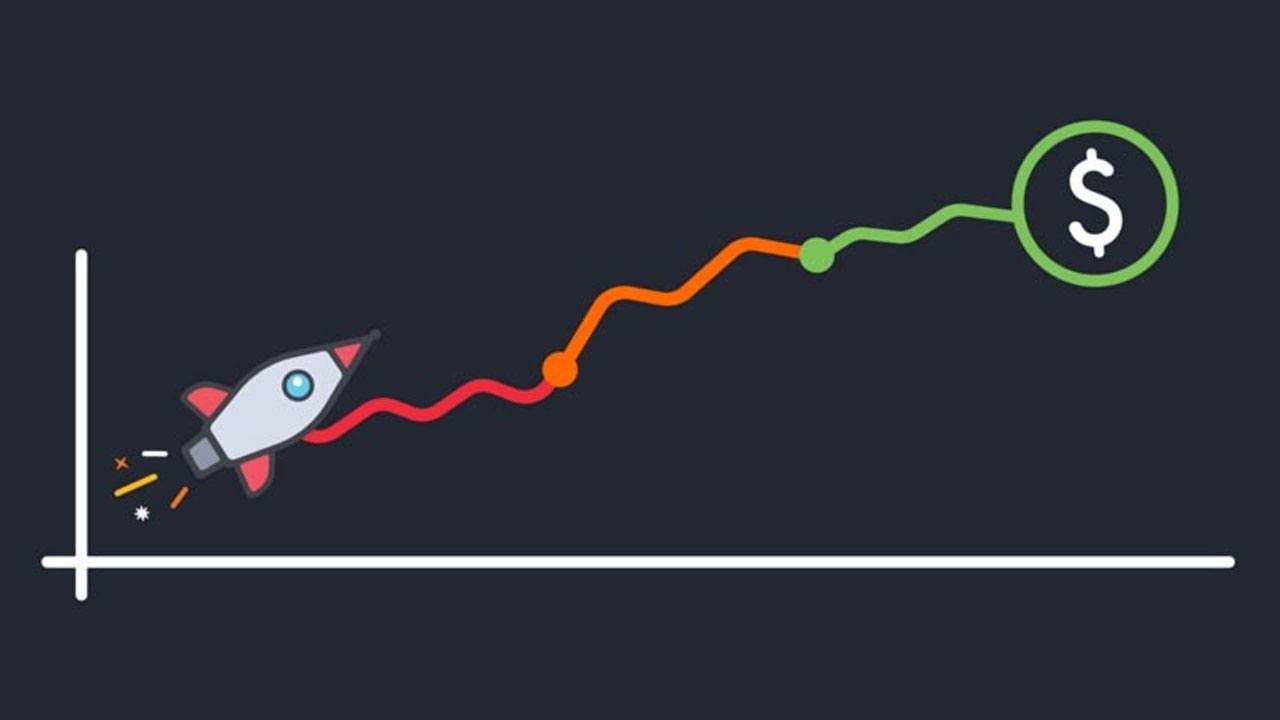
- Informs your customers what to do. This should be the first thing you must make sure you have done. If your customers have no idea where to go and what to click, they’ll just hit the back button.
- Your headline should be attention-grabbing and contain the keyword your customer is interested in. It is thus vital & essential that you create several landing pages for different kinds of traffic. In other words, always show your visitors how your product can help them achieve their ultimate goal.
- There should be as little barrier as possible for your customer to purchase your product. Don’t make them sign up, or ask for details, etc. People are incredibly lazy. If you require an additional click to get to the order page, people might just leave halfway, and this happens more often than you would like to believe.
- Split testing your page is vital & essential. Doing this alone can massively increase your conversion. Always try to beat your winner by coming up with more compelling sales letters, headlines, images, or whatever is in your power to change.
- Build trust in your visitors. This is more difficult than it sounds. There should be an “about us” page on every website that shows your visitor who you are, a brief history & preferably background images. You can also include testimonials from past customers. If you are new and have no testimonials, get one by giving your product away in exchange for a testimonial. It’ll be worth it!
- Make use of the most powerful human motivator: the fear of loss. When making an offer, always include a sense of scarcity and value. You can instill a sense of scarcity by offering a limited time offer, limited amount, one-time offer, or even limited bonuses. This is a very powerful technique big corporations have made use of for years to increase their sales.
How to Calculate Conversion Rate?
Conversion rate is essentially the percentage of your website visitors who do (take action) what ‘You’ intend them to do when they land on your website.
This is an easy calculation:
Conversion Rate = the number of visitors who performed the desired action / your total number of visitors.
Obviously, this “desired action” includes purchasing your products or services but can also consist of various goals like – downloading a whitepaper, form registration, calling or emailing your office, downloading a software trial, etc. You might be wondering where to get this data? Well, you certainly need to install Google Analytics! It’s free, & it’s brilliantly designed & just as important & well supported.
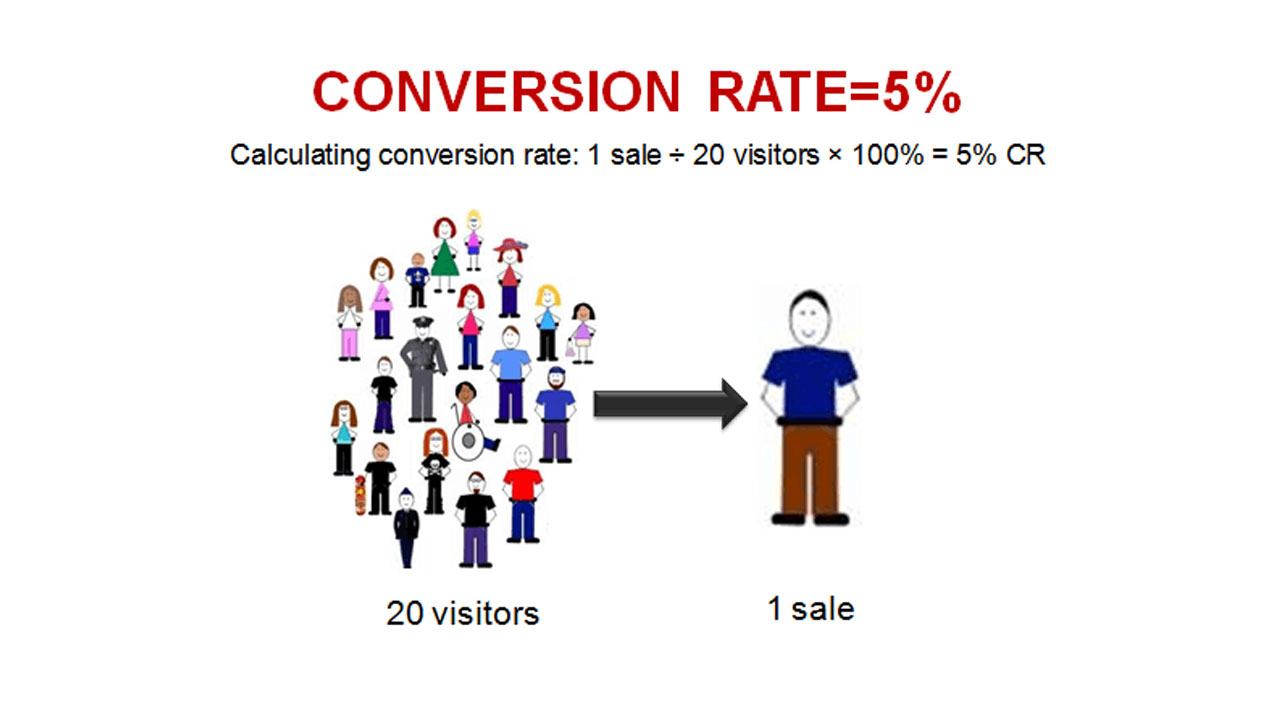
Conversion Rate Optimization Steps: Understanding the Process
Search engines are considered one of the best ways to market your brand, website and expand your business. Statistics have shown that 80% of websites are found through search engines. Ranking high in search engines is not enough to have a successful business; you need to make sure that your business conversion rate is high enough.
Your website tells a lot about your business and what you offer, so make sure you have a professional website design. If you think that your website looks outdated, you should consider having a redesign to make a better first impression on your business. Check your competitor’s website in terms of design and implementation. This is a vital step for a better conversion rate, so don’t ignore it!
Your web page structure:
Make sure that you have a unique page for each offering you carry. Don’t confuse your client with a page that contains all of your products. Having a unique page for each offering will make it easier for your customers to comprehend in detail. Provide good documentation and make it clear for average online users.
Don’t hide your company’s info:
Don’t hide from your customers. Make sure that you provide a phone number in case your users want to contact you for any reason. Also, mentioning your company’s address is very useful to make your users aware of your location. The phone number and the address should be visible on all pages.
Mention the benefits:
At least hundreds of companies offer the same (or similar) thing you are offering, so you need to convince them why they should choose you. Make sure your mention the benefits of buying your products in terms of offers, guarantees, and functionality.
Don’t ignore SEO basics:
This is among the most important steps websites forget to implement. Make sure that your website is search engine friendly by optimizing your HTML tags. Keyword research and writing unique tags for each product will boost your search engine visibility, leading to a better conversion rate.
Why Choose Hawaii SEO Web Design as Your CRO Agency?
Due to the competitive environment of today’s industry, strategies and methods of ensuring that your site is the best in the business are critical to staying one step ahead of your competition and producing more revenue. Furthermore, Conversion Rate Optimization isn’t limited to online shopping since any action, such as contacting a hotline, signing up for an e-newsletter, or seeing a certain web page, might replace the sales portion in the lead generation process.
A foundation level of understanding in Conversion Rate Optimization CRO is highly recommended for keeping one step ahead of the rivals in terms of online strategy. Effective Web companies are offered a list from start to complete on every element of operations to make sure much better ROIs. Every dollar purchased on business is anticipated to create greater sales & business conversions from every web traffic directed.
What Is User Experience?
How Does the User Experience Determine Web Design?
In the old designing era, too much emphasis was put on keywords and creating links. But Google now favors sites that prioritize User Experience over others for SERP rankings. Nevertheless, keyword-optimized content is still an important factor in getting better positions on SERPs. Thus, in improving brand exposure, businesses should balance user experience and keyword optimization.
By doing so, users will not only land on your site but will find it useful, increasing the possibility of them returning for more. Coming up with a memorable user experience depends on several design elements like user requirements, user perceptions, and overall user and/or client expectations. Unfortunately, many organizations ignore the testing aspect that’s involved in UX design because of the high degree of user A/B testing that is required to make User Experience (UX) a big success.
What is UX design?
User Experience design is also called UXD or UED. It refers to all the different aspects of a user’s experience on a website. Some of the aspects that come under user experience design are user interface, graphics that are used on the site, interactivity, and interaction with the user. Businesses aim for conversion of traffic into leads and then leads into sales.
However, users find sites through keywords or keyphrases of the information they want. This means that, generally, users land on a particular site due to its content. They search for specific information that we should address in our content to have them directed at our sites by search engines. The new Google search algorithm weighs the usability of a site. It calls for a better User Experience in terms of the site’s content, architecture, design, templates, layout, etc. So you need to design your site and create content with the users in mind.
Some good measures of user experience include the number of page visitors and the time they spend on the page during their visit. These measures indicate the usability of a page based on the average number of visitors and the average time they spend on it. Using these measures, you can also determine the sources of traffic that directed the highest quality of visitors.
Why Is UX Experience Important?
In web design and web development, a lot of emphasis must be placed on the User Experience. To guarantee this, the appearance of the website is of great importance, as well as all the framework & functionalities of all major website interfaces. Website designers and developers must bear in mind that users are not well-known for their patience.
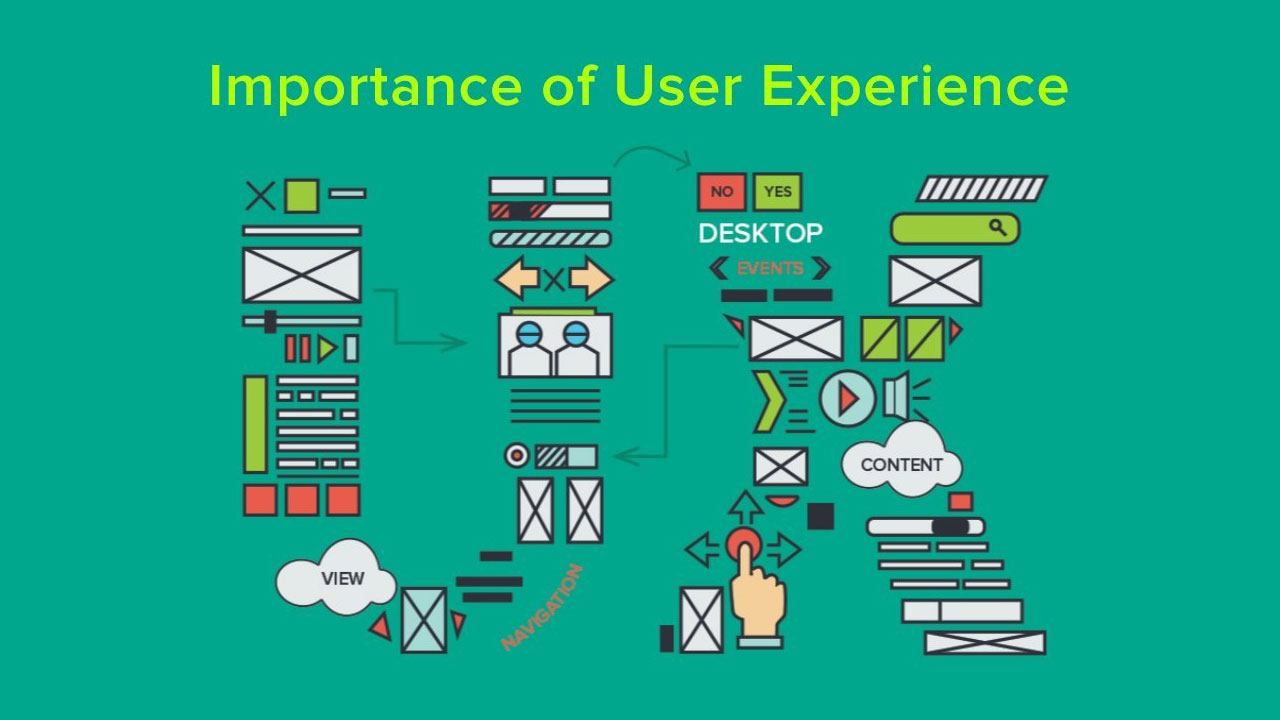
If a visitor or user spends a lot of time trying to spot common user interfaces of your site, it is very likely that the person will just move on to the next website that is user-friendly. This way, you not only lose out on traffic to your site but potential conversation. Also, it affects your brand as the users who experience hardship trying to navigate your website may never return, and you risk seeing your website’s conversion rates dwindle. Competent web designers and web developers like Hawaii SEO Web Design understand its importance and put in place strategic measures to guarantee their users the best experiences.
Influences on User Experience
User Experience design isn’t only about aesthetics, it is also about value, usefulness, useability, accessibility, desirability, findability and credibility.
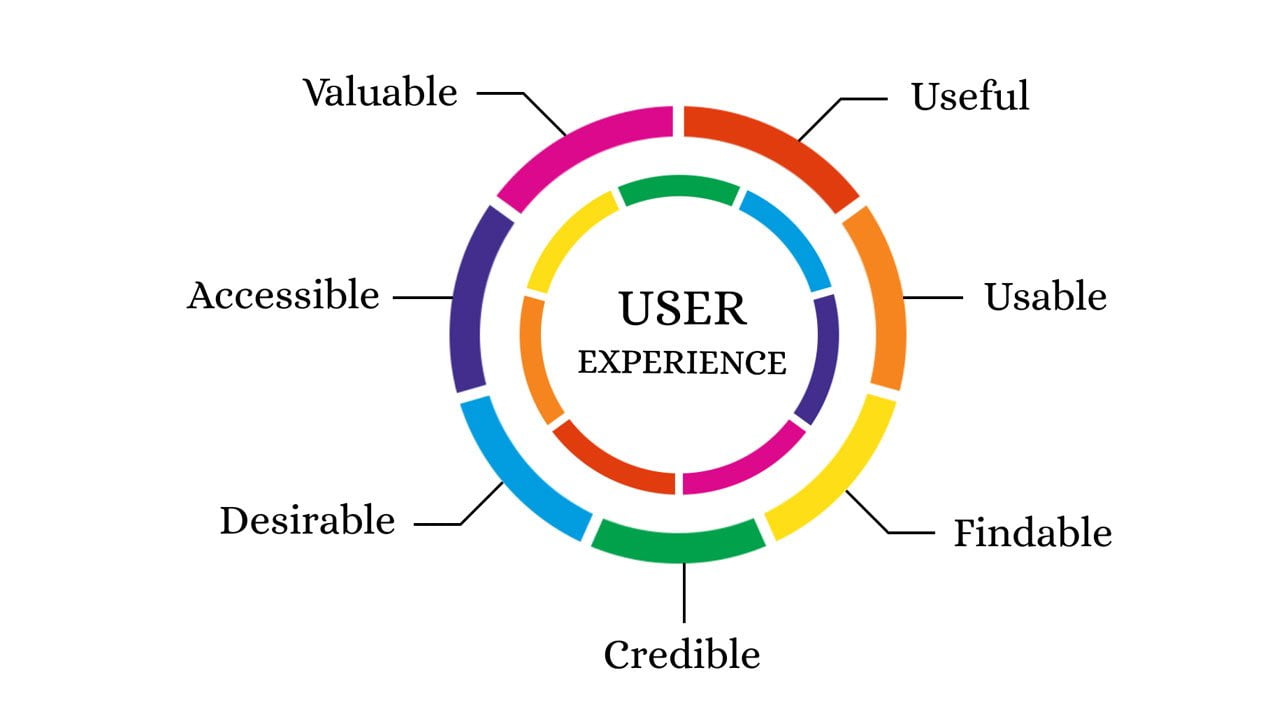
Information Architecture
Web design begins with the information architecture on the website. There are very few people who understand the importance of information architecture for User Experience web design. It is important to design the information architecture of a website based on how potential users will like to navigate through it and use its content. This is what user experience design helps to accomplish.
Graphic Design
The next criterion of User Experience design is the quality of the visual elements used when designing the website. It is also referred to as visual design or user interface design. Some elements that are used to visually enhance a website deal with the way that they are arranged and balanced throughout the site. Aesthetically speaking, each element “talks” to the others that are around it, helping the visitor to visually understand the page “at a glance”. This can include such things as typography, colors or icons. When one designs a website with user experience in mind, content creators pay attention to the needs and desires of the targeted user instead of their personal preferences.
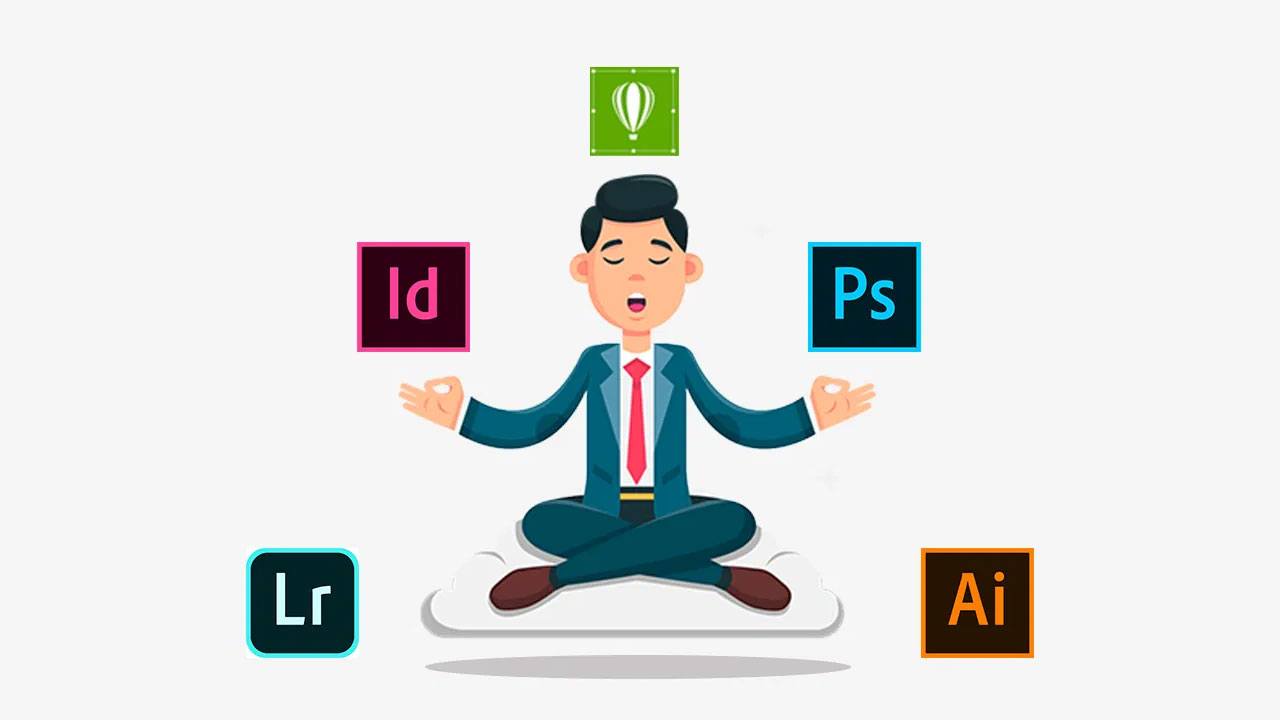
Interaction Design
Interaction design is another important element of user experience design. The ways that elements interact in turn create new opportunities for visitors to engage with the website. Some of this happens only in the mind of the visitor, but other times it translates into a visitor filling out a contact form or writing the website owner a question or comment. Conventionally, this could also result in the visitor signing up to a newsletter or membership, downloading an ebook, creating a user profile, sharing content that’s on the site with friends, or giving a like to the website’s social media page.
One should be able to strike a balance between the different interactive elements that are being used on the site. It may not be wise to use all the types of interactive elements on the site. This can end up confusing the visitor. The different elements that may be used to help a user interact with the site should also be presented in useful ways that encourage visitors to interact in different ways on a particular webpage, thereby maximizing the kind of engagement that’s possible.
Usability Design
Even though usability design overlaps with interaction design in some key areas, we ought not to collapse the two into one. Usability design isn’t only about interaction. It is more than interaction because it determines the use value of content that’s on the page, as well as the navigation from one page to another, and helps us decide upon the format for presenting the content on any page. Usability design helps with determining how the created content will coexist with each other elements. All of these factors come under the umbrella of usability.
Interaction design’s goal is to maximize a visitor’s interaction with the webpage. Whereas usability design respects the possibility that not all visitors may want to interact with the website, it nevertheless tries to maximize the usability of the website or webpage by encouraging visitors to get the most out of the content on the page in a creative manner.
User Experience design is more than just creating a good-looking website for the user. The entire purpose of creating a website may be lost if your user does not have a good experience on the site. Also, with the kind of competition that is there today, you cannot ignore User Experience. This can have a bad impact on the performance and popularity of your site. That is why it is important to hire a professional web design company like Hawaii SEO Web Design, we often create User Experience-based designs to show the client beforehand and we give it a lot of importance alongside SEO and other aspects of custom website design.
What Is Link Building?
Success in life comes through building and sustaining both personal and professional relationships. As human beings, we strive to be at the right place at the right time to make the right connection. We quickly learn that each right connection links to another, and before we know it, we are part of a network.
After you’ve worked on your website for a while and realized that visitors don’t magically arrive at your virtual doorstep, you start to learn a little about traffic generation. Among the first things you’ll likely come across is building links.
What Is A Link?

A link is a connector between two web pages. It can connect an article on your website to a category or home page or even another article on the same site. Those are considered internal links since they connect one part of your website to another.
Then there are external links that connect a page of one website to that of another. For instance, when I write an article and post it in an article directory, I connect the article page on the directory to a page on our website via the link.
What Is Link Building?
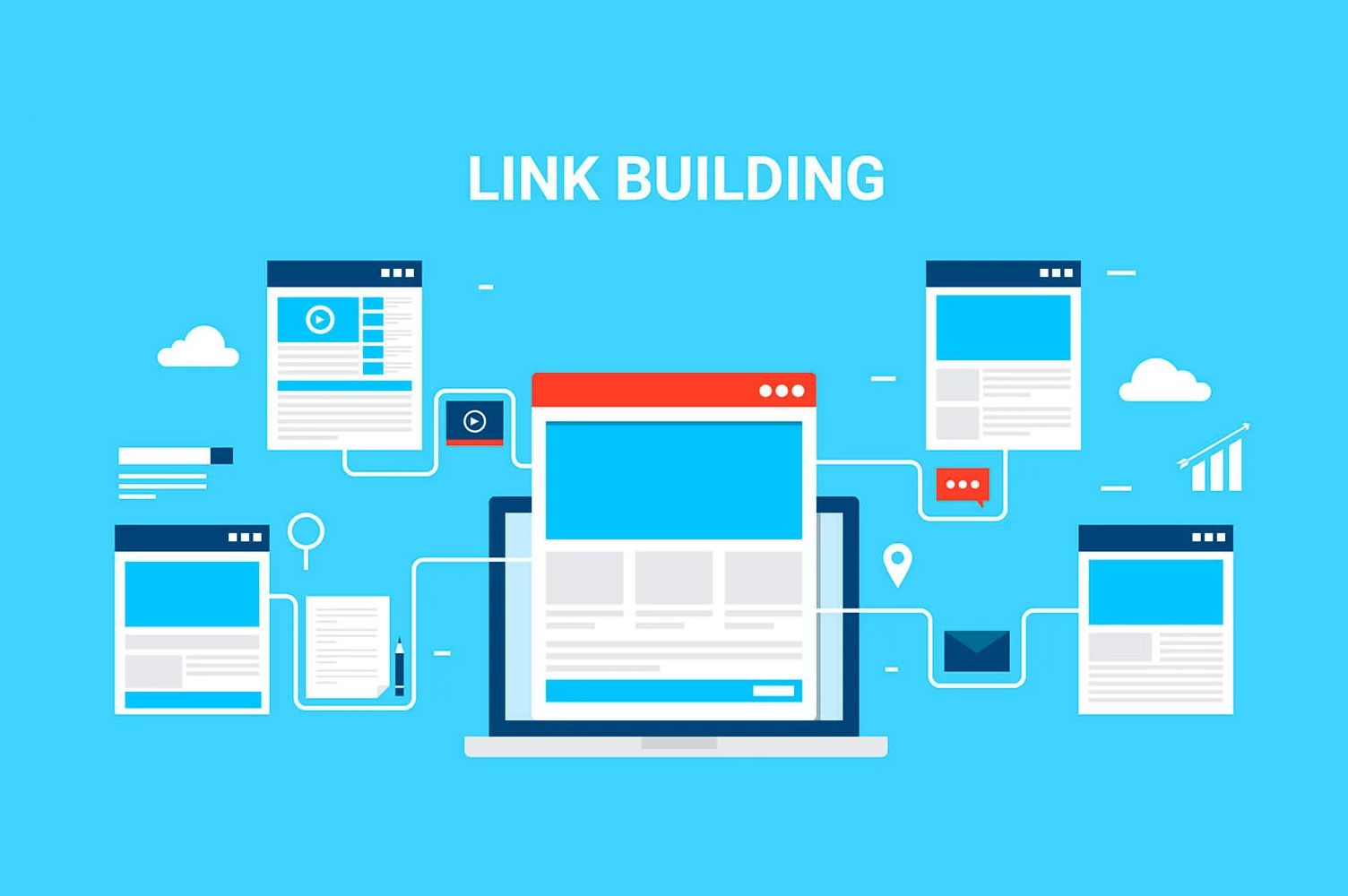
Link building is the process of actively building more links, that is, creating more connections – that lead back to pages on your own website. This can be accomplished by writing and submitting articles like the one you are reading right now. Another good link-building example is writing guest blog posts that include one or two links back to the writer’s website.
Other forms of link building include directory submissions, blog commenting, forum participation, setting up various profile pages, social bookmarking, press release submissions, etc.
What Is Link Building In SEO?
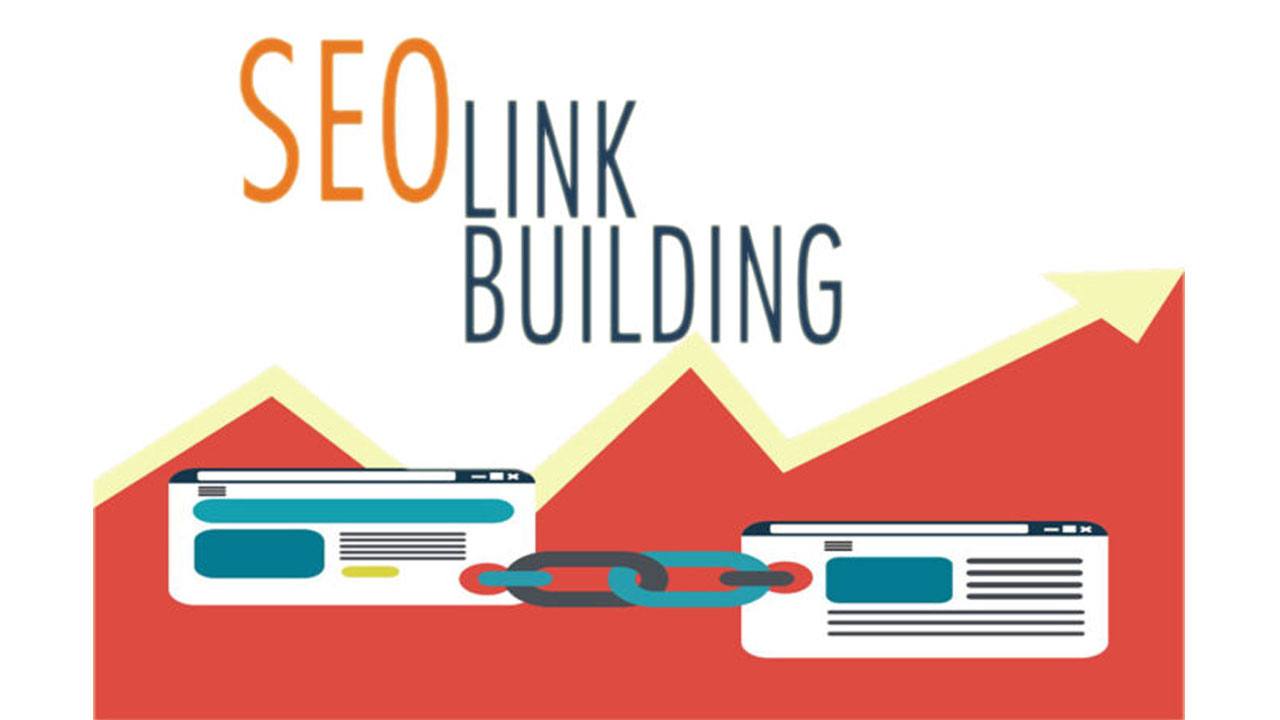
Link building creates those connections or highways between pages and sites, which of course, sends visitors our way. By far, the most compelling reason to build links, though, is to rank well in the search engines and thus get tons of free traffic to our sites. The anchor text of a link (that’s the words you are using to underline in blue and make a clickable link) is the second most important factor when it comes to ranking a page in the search engines.
The first is the title tag; combined with the title tag and backlinks, make up at least 80% of ranking factors. By simply making sure you use the right title and then working on building backlinks with keyword-rich anchor text, you can get on page one of Google for just about any term. It may take quite a few backlinks if you are targeting a competitive keyword, but you can do well by just doing those two things.
How to Do Link Building?
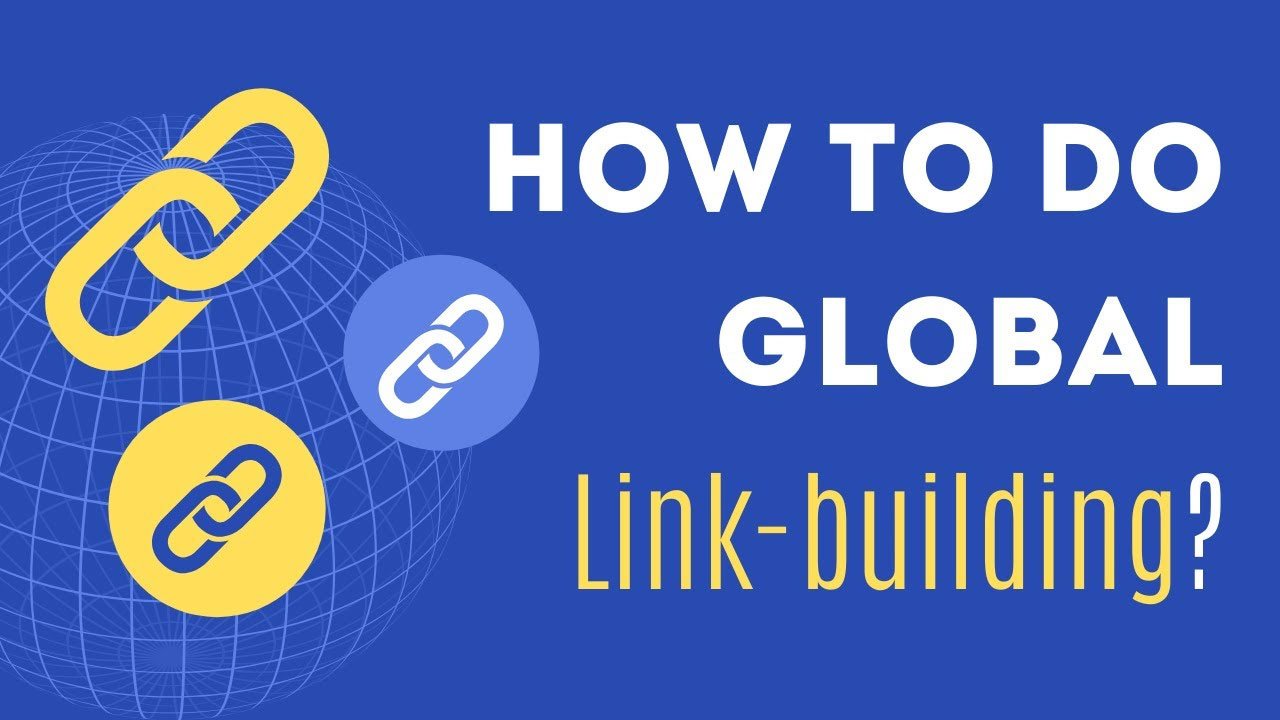
Now, you may wonder how to actually generate high-quality links. Well, it is actually not a difficult task to accomplish, although it may take many of your precious hours. Below are some effective ways you can take.
- Submit to Link Directories
Link directories are available in a large number these days. You can start submitting your website to some of them. There are some free link directories for you to submit your website to. Nevertheless, these directories will not make the page rank of your website increase quickly. If you have a huge budget, you will like to submit your website to some great directories like Yahoo and Bing Places. Yahoo or Bing Places may charge you a huge amount of money, but the price is worth it.
- Engage Experts
Although hiring link building or SEO experts is a traditional method, many people think this is the best way to generate high-quality links. A link builder will be able to help you rank up your website on the major search engines like Google, Bing, and Yahoo. However, it is better for you to do research first before you hire a link builder to avoid being – blacklisted by the search engines.
- Link Baiting
Link baiting is also a great technique to generate high-quality links. This is a method to entice incoming links to your site. In order to make your website enticing, you can write unique, original, and quality articles on your website. More people will be interested in placing their links on your website if you provide them what they need.
Do Follow Vs. No Follow Links
When you link your site to a do-follow site, the HTML link code will be a regular anchor text HTML link. In the case of a no-follow, the no-follow HTML tag will be added within the link, and you would not get Hyperlinks back to your site from this site.
If you link your site to a do-follow site, the search engines will acknowledge your link, and you will get what is called a backlink to your site. If you link your site to a no-follow site, the search engines will not acknowledge the link as a backlink to your site.
- If a “do follow” designation is made, Google will look at the link as a backlink to your targeted page.
- If a “no follow” designation is made, Google will not use it as a backlink to your target.
There are Do-follow and No-follow article directories, blogs, and social networking sites. Sometimes, No-follow sites are still valuable for traffic to your target, despite the fact that Google may not count it as a backlink, and there are some that argue that a no-follow will still give you a little backlink juice.
Why Is Link Building Important?
Everything nowadays has a reference point on the Internet as well. Social networking, information gathering, commercial endeavors, and entertainment; all these aspects are reflected on the Internet. There are websites dedicated to each of these subjects. Looking at websites from the commercial point of view, marketers of various products look for the highest ROI from the website. They do so in various ways, such as publishing original content regularly, posting important information about the business and the product or service that they are selling, and introducing lucrative offers for their customers.
Link building allows you to do just that. It generates traffic in a different way to your website. Search engines will always pay more attention to your website if it has many links attached to it. When your website is linked with another website, it is known as link building. This means that when browsers visit either of the two websites, they come across the other one. This provides a fair chance of traffic generation to the website that is linked to the website where the visitor originally is.
There is actually no doubt that link building is among the most vital & essential things for increasing the page rank of your website. Experts say that the more links you place on & for your website, the higher the rank of your website is. However, it is not entirely true. The truth is that your website will rank up easily and quickly if you provide high-quality links. For comprehensive & proven Link Building Strategies contact our experts today!
Popular Posts
- Google E-E-A-T Explained: Hawaii SEO Tips for Better Business RankingsNovember 30, 2024 - 9:19 am
- Local SEO in Hawaii for 2024July 7, 2024 - 4:01 am
- Google Ranking Factors 2022July 1, 2022 - 11:30 pm
- How to Use SEO to Grow your BusinessJune 14, 2022 - 7:05 am
- Get Ahead Of The Curve With The Top SEO ServicesMay 20, 2022 - 8:18 am



